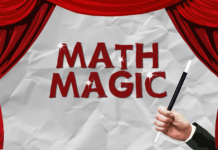 For Daily Job Alert For Daily Job Alert |
Join Our Whats App Channel |
 For Free Study Material For Free Study Material |
Join Our Telegram Channel |
Simplification & Approximation Tips & Tricks
The Quantitative Aptitude section of the Bank exam consists of questions such as Simplification, Number Series, Permutation & Combination, Quadratic Equation, Data Interpretation, Data Analysis and other Miscellaneous questions.
There are almost 10 to 12 questions in the paper which deal with topics such as Percentage and Average, ratio & proportions, partnerships, Profit & loss, calculations of simple & compound interests etc.
Here is a short study-guide to help you crack questions on “Simplification and Approximation“,
Hello readers,
As we all know that simplification is most widely asked topic in almost every banking exam. So let us try to understand what is actually meant by word ‘Simplification’.
Simplification means to find out a final answer for a complex calculation.
Simplification questions are asked to check the ability of a student to deal with numbers which can be in one of the following two types.
- Sometimes, a calculation is given and one of the numbers is missing from the calculation. To find out the missing number, we have to approximate the given numbers or do the basic operations.
- Sometimes all the numbers are given with some operations between them & we have to simplify the calculation.
Rules related to Simplification
Rule-(I) Replace ‘of’ by ‘Multiplication’ & ‘/’ by ‘Division’
Explanation: Whenever we find ‘of’ in a simplification problem, we can replace that by ‘multiplication(*)’. Similiarly ‘/’ can be replaced by ‘÷’.
Example: Find ¼ of 20
Solution: (¼) x 20 = 20÷4 = 5
Rule-(II) Always keep in mind the “BODMAS” rule. These operations have priorities in the same order as mentioned.
Explanation: Whenever we have more than one operation in the given calculation, we have to do the operations according to the priority specified by ‘BODMAS’
- B-Bracket
- O-Of (means multiplication)
- D-Division
- M-Multiplication
- A-Addition
- S-Subtraction
Example: Simplify: (2+3)*30
Solution: In this question, we have two things-Bracket & Multiplication. According to the BODMAS rule, we have to solve bracket first and not multiplication. So now coming to bracket, we have only one operation-Addition, so we will do addition.
(2+3)*30 = 5*30
Now we have only one operation to do – Multiplication
5*30 = 150
Example: Simplify: (2+5) of 80
Solution: In this question, we have three things – bracket, addition & of. Replacing ‘of’ by ‘multiplication’.
(2+5) of 30 = (2+5)*80
Now we have three things – bracket, addition & Multiplication. According to the BODMAS rule, we have to solve bracket first and not multiplication. So now coming to bracket, we have only one operation-Addition, we will do addition.
(2+5)*80 = 7*80
Now we will do multiplication.
7*80 = 560
Rule-(III) Multiplication & Division have same priority(Do that operation first which is on left).
Explanation: Though division has more priority than multiplication according to ‘BODMAS’ but we can perform multiplication first.
Example: 8*30/15
8*30 ÷ 15
Solution: In this question, we have two things – Multiplication & Division. So we can perform any operation first as they have same priority.
Doing Multiplication first:
240 ÷ 15
16
Doing division first:
8*2
16
Rule-(IV) Addition & Subtraction have same priority.
Explanation: Though addition has more priority than division according to ‘BODMAS’ but we can perform any of the two operations first.
Example: 30+40-15
Solution: In this question, we have two things – Addition & Subtraction. So we can perform any operation first as they have same priority.
Doing Addition first:
70 – 15
55
Doing Subtraction first:
30 + 25
55
Rule-(V) Don’t hesitate in rounding the numbers to nearest integers.
Explanation: Most of the times the numbers are given in such a way that you can round them quickly and get the answer (Rounding should be done or not, It can be realised by looking at the given options).
Example: (324.5*15)/(5.01*24.98)
Solution: (325*15)/(5*25)
=13*3
=39
Some previous year questions asked in banking exams from simplification
Now let us see some of the previous year questions asked from ‘Simplification’ & try to apply the rules learnt so far.
Q.1) Simplify: 127.001 * 7.998 + 6.05 * 4.001
- 1000
- 1020
- 1040
- 1080
- None of these
Solution: Using the rounding concept
127 * 8 + 6 * 4
Using the BODMAS rule
1016 + 24
1040 (Option 3)
Q.2) What will come at place of ?: 9876 ÷ 24.96 + 215.005 – ? = 309.99
- 270
- 280
- 290
- 300
- 310
Solution: Using the rounding concept
9875 ÷ 25 + 215 – ? = 310
Using the BODMAS rule
395 + 215 – ? = 310
610 – ? = 310
? = 300 (Option 4)
Q.3) What will come at place of a: (128 ÷ 16 x a – 7*2)/(72-8*6+a2) = 1
- 1
- 5
- 9
- 13
- 17
Solution: Using the BODMAS rule
(8*a – 14)/(49-48+a2) = 1
(8*a – 14)/(1 + a2) = 1
8a – 14 = 1 + a2
a2 – 8a + 15 = 0
a=3 or 5 (Option 2)
Q.4) What will come at place of ?: 85.147 + 34.192*6.2 + ? = 802.293
- 400
- 450
- 550
- 600
- 500
Solution: Using the rounding concept
85 + 35*6 + ? = 803
Using the BODMAS rule
85 + 210 + ? = 803
295 + ? = 803
? = 508 [approx. = 500] (Option 5)
Q.5) What will come at place of ?: 3/8 of 168*15 ÷ 5 + ? = 549 ÷ 9 + 235
- 189
- 107
- 174
- 296
- None of these
Solution: Using the BODMAS rule
(3*168÷ 8)*15 ÷ 5 + ? = 549 ÷ 9 + 235
(504÷ 8)*3 + ? = 61 + 235
63*3 + ? = 296
189 + ? = 296
? = 107 (Option 2)
Key points to remember related to Simplification:
- Replace ‘of’ by ‘Multiplication’.
- Replace ‘/’ by ‘Division’.
- Always do the operations in priority according to ‘BODMAS’.
- Division & Multiplication have same priority (Start from left).
- Addition & Subtraction have same priority.
- Rounding can be done to simplify problems.
- When the given options are very close then rounding doesn’t help much.
- Always look at the options before doing simplification that can help in elimination of options.
Basic Rules of Simplification
BODMAS Rule
It defines the correct sequence in which operations are to be performed in a given mathematical expression to find the correct value. This means that to simplify an expression, the following order must be followed –
B = Bracket,
O = Order (Powers, Square Roots, etc.)
D = Division
A = Addition
S = Subtraction
1. Hence, to solve simplification questions correctly, you must apply the operations of brackets first. Further, in solving for brackets, the order – (), {} and [] – should be stricly followed.
2. Next you should evaluate exponents (for instance powers, roots etc.)
3. Next, you should perform division and multiplication, working from left to right. (division and multiplication rank equally and are done left to right).
4. Finally, you should perform addition and subtraction, working from left to right. (addition and subtraction rank equally and are done left to right).
EXAMPLE 1: Solve 12 + 22 ÷ 11 × (18 ÷ 3)^2 – 10
= 12 + 22 ÷ 11 × 6^2 – 10 (Brackets first)
= 12 + 22 ÷ 11 × 36 – 10 (Exponents)
= 12 + 2 × 36 – 10 = 12 + 72 – 10 (Division and multiplication, left to right)
= 84 – 10 = 74 (Addition and Subtraction, left to right)
EXAMPLE 2: Solve 4 + 10 – 3 × 6 / 3 + 4
= 4 + 10 – 18/3 + 4 = 4 + 10 – 6 + 4 (Division and multiplication, left to right)
= 14 – 6 + 4 = 8 + 4 = 12 (Addition and Subtraction, left to right)
To Solve Modulus of a Real Number
Tips to Crack Approximation
Conversion of decimal numbers to nearest number
To solve such questions, first convert the decimal to nearest value. Then simplify the given equation using the new values that you have obtained.
EXAMPLE 1: Solve 4433.764 – 2211.993 – 1133.667 + 3377.442
Here,
4433.764 = 4434
2211.993 = 2212
1133.667 = 1134
3377.442 = 3377
Now simplify, 4434 – 2212 – 1134 + 3377 = 4466
EXAMPLE 2: Solve 530 x 20.3% + 225 x 16.8%
Here, 20.3% becomes 20% and 16.8% becomes 17%
Now, simplify 530 x 20% + 225 x 17%
= 106 + 38.25 = 144.25
Approximation of Square Roots
(1) To simplify a square root, you can follow these steps:
(2) Factor the number inside the square root sign.
(3) If a factor appears twice, cross out both and write the factor one time to the left of the square root sign. If the factor appears three times, cross out two of the factors and write the factor outside the sign, and leave the third factor inside the sign. Note: If a factor appears 4, 6, 8, etc. times, this counts as 2, 3, and 4 pairs, respectively.
(4) Multiply the numbers outside the sign.
(5) Multiply the numbers left inside the sign.
(6) To simplify the square root of a fraction, simplify the numerator and simplify the denominator.
NOTE: Check that the outside number squared times the inside number should equal the original number inside the square root.


Thanks













